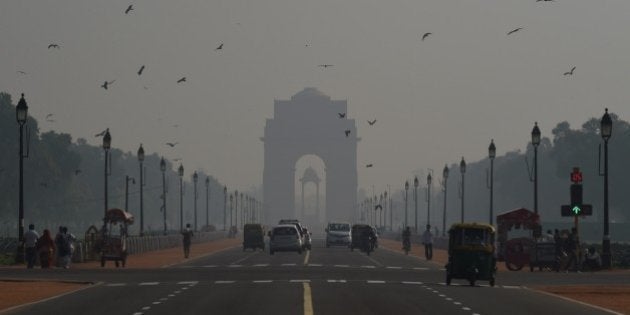
NEW DELHI -- There has been a "seven-fold increase" in Delhi's air pollution level since October, a CSE expert said today even as real-time exposure readings of nearly all monitoring stations put PM 2.5 and PM 10 figures above the 'severe' threshold.
The city's ambient air quality (outdoor air quality over a 24-hour period as opposed to real time) also continues to be 'very poor', a situation that is extremely harmful for vulnerable groups such as the elderly and children.
Experts say, the sheer amount of microscopic pollutants, that Delhi's air bear would have prompted authorities in Beijing, another severely polluted megapolis, to issue advisories restricting outdoor activities, shutting down factories and regulating vehicular movement.
At Anand Vihar, where pollutants have consistently breached safe limits, PM 2.5 and PM 10 were at a staggering 348 and 808 microgram per cubic meters. At Punjabi Bagh, PM 2.5 was 397 and PM 10 634 as per DPCC in the morning hours.
The corresponding safe limits are 60 and 100. Anything beyond that can harm the respiratory system as the particles embed themselves deep inside the lungs.
"There has been a seven-times increase in pollution levels since October 1. The winter pollution is going to be very serious. Advisories need to be issued asking people to minimise their levels of outdoor activity," Anumita Roychowdhury of Centre for Science and Environment said.
The Centre's System of Air Quality and Weather Forecasting and Research (SAFAR), DPCC and the Central Pollution Control Board's (CPCB) figures leaves no room for doubt that the situation calls for immediate measures.
SAFAR's air quality index of Pitampura, Delhi University, Mathura Road, IGI Airport among others displayed 'very poor' category. While CPCB's National Air Quality Index also threw up 'very poor' readings in places across the city.
'Very poor' signifies PM 10 and PM 2.5 levels between 351 and 420 and 211 to 252 micro gram per cubic metre. 'Severe' is declared when PM 2.5 and PM 10 cross 253, 421 micro gram per cubic metres respectively.
However, smog has dissipated slightly as due to cloudy conditions, which IMD officials said, does not allow formation of dense fog and its coming together with smoke.
The National Green Tribunal (NGT) has directed the Delhi government to issue a notification within a week with regard to areas in the capital which are most polluted and enumerate steps needed to check air pollution.